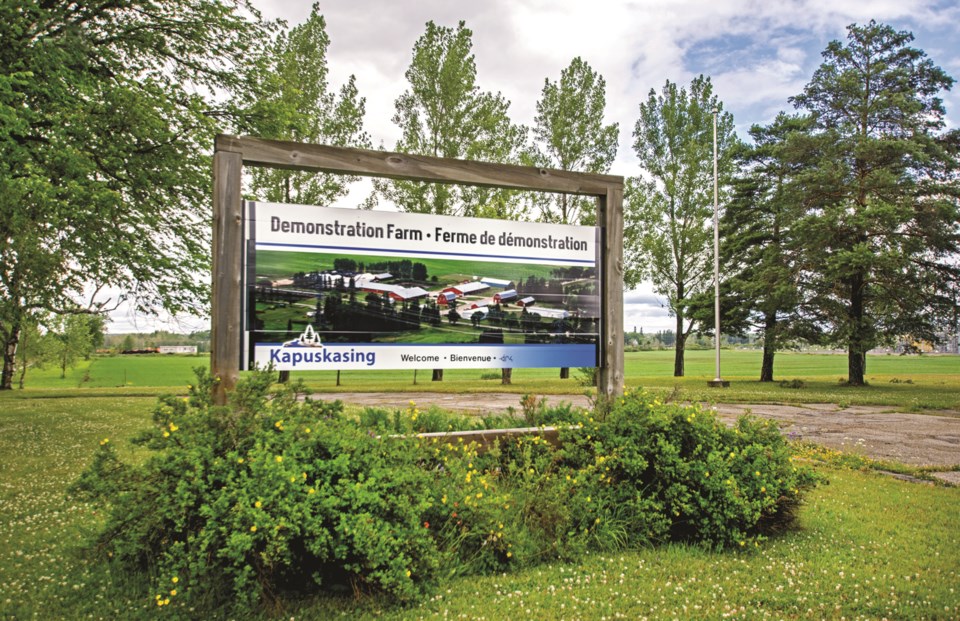In 2017, when Selina and Jim Rogers and their four children departed their well-established farm operation in North Battleford, Sask., in favour of a relatively undeveloped acreage in Northern Ontario, more than one person questioned the wisdom of that choice.
Formerly an agricultural hot spot, the area of northeastern Ontario has seen less farming in recent years, but a concerted effort over the last decade is pushing for a renaissance.
The Rogers family, who owns and operates Rogers Crop Enterprises, believed they could rise to the challenge.
“We humbly, but confidently, said, we have determination; we have technology,” Selina said, during a virtual presentation as part of the Northern Ontario Ag Conference on Feb. 17.
“We have so many more tools in our toolbox than they did three, four generations ago."
Their adventure actually began two years earlier, when a friend recommended they take a trip to Northern Ontario to explore the area hosting the Great Clay Belt, a 180,000-square-kilometre swath of fertile land stretching between the Cochrane District and Abitibi County in Quebec.
In an immigration plan initiated by the federal government, much of the area was settled by former soldiers following the First World War, but agriculture has fallen off in the decades since, and many formerly bustling homesteads have been left to go fallow.
“Three, four generations of farmers have been lost from the North,” Selina said.
“As a farmer, it's really sad that there's so many empty fields that are going back to scrub bush where you can see that they had the cows, where they had sheep, where you know they grew crops. It's also exciting that there's so much potential here.”
Over the course of several return trips, the Rogers assessed the risks and the rewards, and ultimately decided to make the move to become “modern-day pioneers,” Selina said.
They purchased their first 200 acres in Val Rita in 2016, and by Christmas of the following year, they had packed up everything and moved east.
But they still needed more land in order to make a go of farming, Selina noted, and that's when they came across the Kapuskasing Demonstration Farm.
Established in 1916 by the federal government as an agricultural research farm, the property encompasses more than 850 acres of land; a 5,000-square-foot business incubator; and land available for crop trials and research.
It was purchased in 2015 by the Kapuskasing Economic Development Corporation with the intention of finding a tenant to operate it as a working farm.
When the agreement with the original tenant didn't work out, the property once again became available for lease.
For the Rogers, the farm presented a “fascinating opportunity” to develop a viable, self-sustaining operation, one that their children could eventually take over and run successfully for multiple generations, Selina said.
Yet their relocation strategy didn't come without challenges.
While there's a lot of private land out there, it was tough to find out what was available for purchase, and negotiating with the Ministry of Northern Development, Mines, Natural Resources and Forestry for Crown land is a slow process, Selina said.
Dealing with the financial institutions was also a frustrating endeavour, since they don't typically view Kapuskasing as a viable area for agriculture, she added.
As a result, the Rogers turned to funding agencies like the Northern Ontario Heritage Fund and the Sustainable New Agri-food Products and Productivity (SNAPP) program, along with help from the Northern Ontario Farm Innovation Alliance (NOFIA) to help with crucial, farm-related purchases.
There's also a lack of infrastructure, such as grain elevators or supply depots, which forced the family to better plan for their needs in advance.
Developing the necessary infrastructure along Highway 11 is “doable,” Selina said, but it requires planning to make it happen.
“I looked at challenges as something that we have to think about. It builds our strengths,” she said. "When we complete that challenge, it gives us a sense of satisfaction and accomplishment of a job completed."
Today, the farm is thriving, and the Rogers family is preparing for their fourth crop. This spring, they'll seed 1,700 acres consisting of canola, oats, “a dab of wheat,” and about 50 acres of soybeans, Selina said.
Their kids are also flourishing, each finding “a little piece of the farm that they enjoy the most.”
The oldest has earned his tile drainage licence and has plans to move back to Saskatchewan to work family-owned land there, while the next in line has purchased and cleared his first 100 acres of land, and is now also working toward his tiling licence.
The Rogers' youngest son is overseeing operation of the Feed & Water Cow Mootel, a cattle rest stop for long-haul truckers that opened in 2020, while also tending to his own small herd of cattle.
And their daughter has recently given up a retail job to work with the farm on a more permanent basis, taking the lead on the family's market garden, which is being expanded for its upcoming third year.
It's “exciting” to see all four children follow in their parents’ footsteps, said Selina, who's optimistic about future generations of farming in the North.
"This region is beautiful and it is underdeveloped,” she said. “It is so full of potential, and it would be wonderful to see more agriculture here.”
Held online Feb. 17-18, the fourth annual Northern Ontario Ag Conference was an initiative of the Northern Ontario Farm Innovation Alliance (NOFIA), the Rural Agri-innovation Network and the Chicken Farmers of Ontario.




